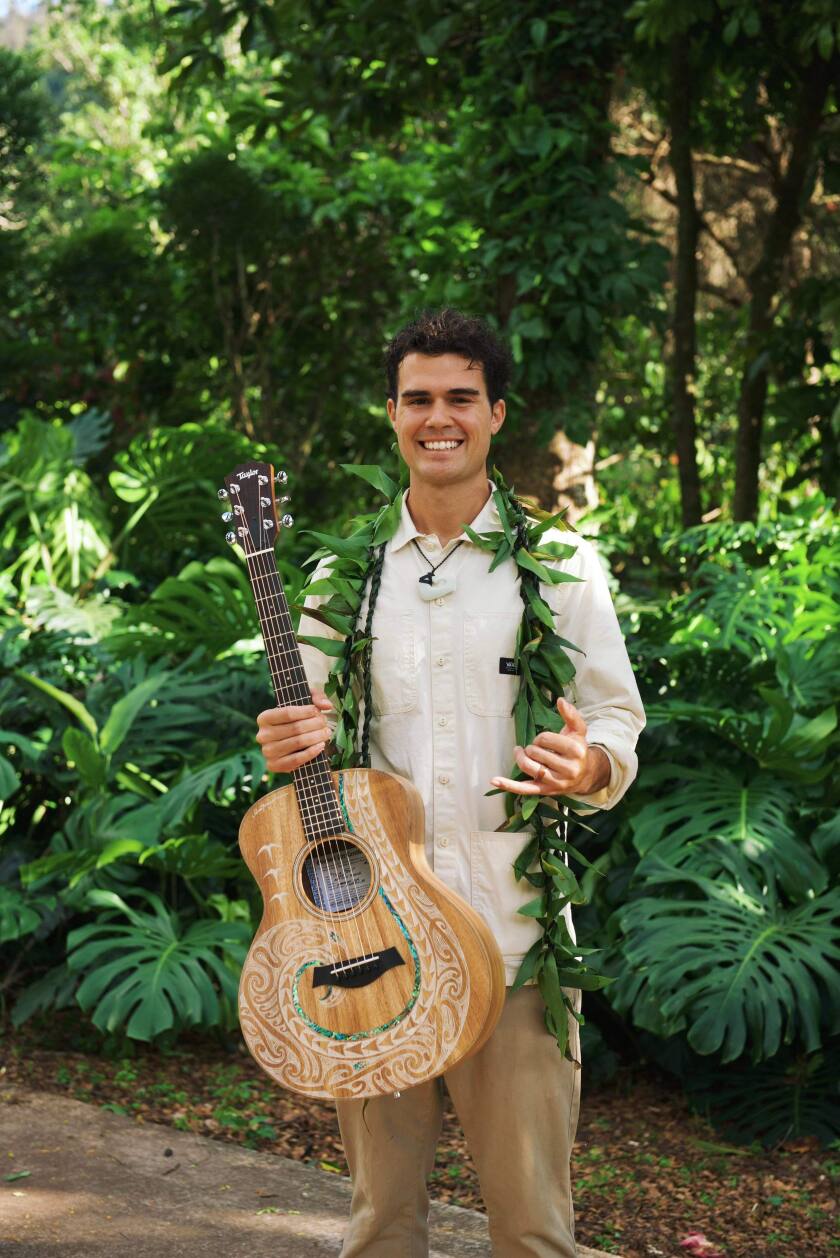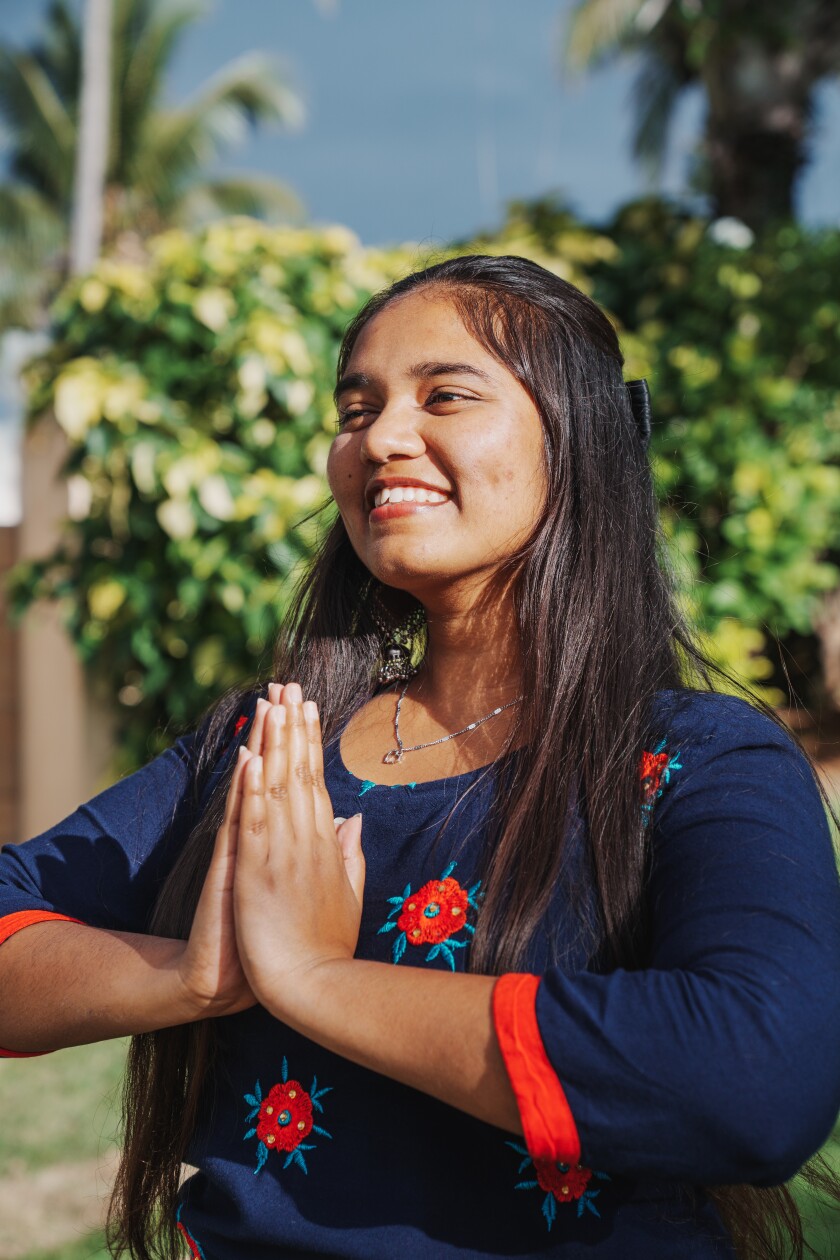A music composer, a wood carver and a dancer all say their art is inspired by nature

When people talk about art, most think of a paintbrush and a canvas, said Caroline James, a senior majoring in information technology from India. But James, along with two other artists, said they have found other art forms inspired by nature.
Sam Mangakahia, an alumnus from Australia with Maori heritage who works as a wood etching and carving artist, said, “The unpredictability but also predictability of the world is so innate. [Nature] is not trying to be symmetrical, meaning balanced, but it just is.” Artists try to recreate that balance, he explained, and it takes intentional energy and thought.
Elements of nature
James explained that dance can represent many aspects of the world, such as fire, water and peace. “I love to dance. It is just one of the best things that could ever happen to me. It lifts me up, makes me happy,” she said.
Though James said her go-to dance style is hip-hop, she recently has been learning more about traditional Indian dancing. “There is this one Indian song, ‘Man Mohini,’” she said, “that is about a girl’s beauty compared to the elements of nature.” She said she loves dancing to this song through hip-hop, but others also dance in a traditional Indian style.
James said emotions and dance styles can be tied to natural elements. Rage is paired with fire, and water is represented through fluid motions. “I represent water when I am dancing,” she said, “My mom said that is the best way I can dance.”
Mangakahia said when he was young, “I would always be doing something with my hands.” His parents, especially his mom, fostered his growth and creativity, he said. His father was a performing artist and ukulele teacher, so there were always spare ukuleles around the house, Mangakahia said. One day,
Mangakahia said he took a kitchen knife to one of the spare ukuleles and began etching designs. That was the start of his company Fresh Ukes, he said, which he started at 15 years old.
Mangakahia’s designs are inspired by cultural patterns based on natural elements, he said. He said he uses a lot of birds in his artwork, specifically iwa birds that represent the sky. He also uses designs that represent navigation and the sea, he said. “There is a never-ending resource of designs when you look outside,” Mangakahia shared. He said he is currently working on a design inspired by ulu breadfruit.

The noise of nature
Haruna Sato, a Japanese senior majoring in music with a composition emphasis, said she finds inspiration for her art at the beach. She explained, “At the beach, there are no noisy sounds… Of course, there are the sounds of the waves crashing, but that is not noise to me.” Sato said the distant sounds there are the noise of nature
calming and help her focus on her musical compositions.
Sato said she uses composition to express feelings, emotions and her thoughts. Sato said, “I love to walk around the beach around 4 or 5 a.m. to see the night sky.” She explained there are so many people during the day that it is a little too noisy for her. “But at night time,” she said, “I can feel nature more.”
“Sometimes I use the sounds of nature in my songs,” said Sato. There is a specific piece Sato composed entitled “Sea.” The instruments included in the piece are a clarinet, violin and piano, and she said the piano imitates the sounds of waves. “I am not good at speaking in English, or even in Japanese,” said Sato. However, “through music,” she said, “I can.”

God in nature
Mangakahia said nature is God like. “You are looking at something very raw and natural,” he said, “something that has been inspiring humans since the beginning.” Mangakahia said he recently went surfing with BYU–Hawaii President John S. K. Kauwe III at Kualoa Point. Mangakahia said they looked back at the mountain range, with a huge rainbow spreading across it and the rising sun. “This scene in my mind, the palm trees and greenery, really stood out,” he said. Mangakahia made an etching to capture the beauty of that day, he said. The etching and others like it are part of Mangakahia’s current brand, Shaka Tribe, and are sold at the BYU–Hawaii Store.
Sato shared, “I think most people need to be alone [in nature] sometimes. There I can feel blessings from God.” Mangakahia agreed, saying, “Every natural element is a type of Christ that we can look to and see Christ in it, whether its elements of the Atonement or Christlike attributes.” He gave an example of the growth of the trees and how they can be a metaphor for people’s growth with the help of Christ.
When people see these natural compositions, it is like looking at truth, Mangakahia said. He continued, “We are in a whirlwind of distractions and voices. When we see truth, we gravitate towards it.” He said he believes nature is a magical resource for humans. When people look at things around them with openness, Mangakahia said there is always room to be inspired.
